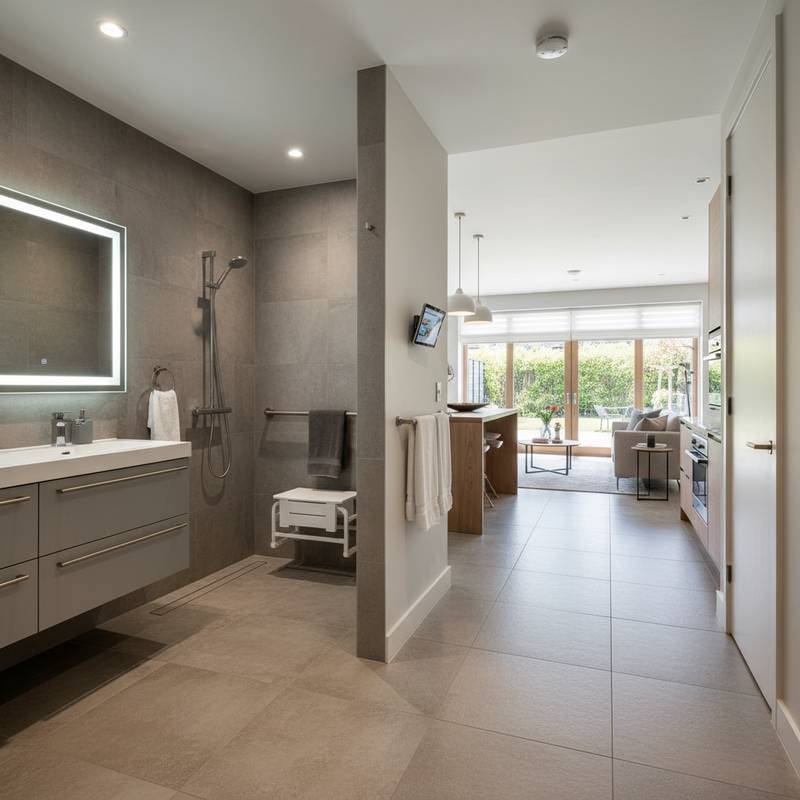Prefab ADU vs Site-Built: Unpacking 2025 Costs
Homeowners often consider adding an accessory dwelling unit (ADU) to boost property value and create versatile spaces for family, guests, or rental income. The choice between a prefab ADU and a site-built ADU hinges on factors such as upfront expenses, construction duration, and design adaptability. This analysis reveals how prefab models can reduce costs by approximately $100,000 compared to site-built alternatives in 2025, while maintaining functionality and appeal.
Key Differences in Construction Approaches
A prefab ADU undergoes assembly in a factory setting, where components receive precise engineering and quality checks before transport to the site. Installation involves minimal on-site work, such as foundation laying and utility connections. In contrast, a site-built ADU develops entirely on location, starting with excavation and progressing through framing, insulation, and finishing stages.
Prefab methods excel in controlling variables like weather exposure and labor variability, which often lead to material efficiencies of up to 20 percent. Site-built processes provide opportunities for real-time adjustments but expose projects to delays from supply chain issues or environmental factors. Understanding these distinctions helps homeowners align their selection with practical goals.
Breaking Down Initial Costs
Prefab ADUs offer predictable pricing structures, typically ranging from $150,000 to $250,000 for a 600- to 800-square-foot unit. This base includes the core structure, basic plumbing, electrical systems, and standard interior finishes. Additional expenses cover site preparation (around $10,000 to $20,000), delivery fees ($5,000 to $15,000), and permitting ($2,000 to $5,000), yet the total remains transparent from the outset.
Site-built ADUs, however, span $250,000 to $400,000 for similar sizes due to variable elements like custom material sourcing and extended labor hours. Breakdowns show foundation work at $30,000 to $50,000, framing and exterior at $100,000 to $150,000, and interior outfitting at $80,000 to $120,000. Unforeseen costs, such as material price fluctuations or code revisions, can add 10 to 15 percent more.
The $100,000 savings with prefab stems from streamlined production and reduced on-site time, which cuts labor by 40 to 50 percent. Homeowners benefit from fixed quotes that shield against inflation in 2025's volatile market.
Evaluating Design and Customization Options
Prefab ADUs prioritize efficiency with pre-designed floor plans, often limited to 5 to 10 configurations per manufacturer. Customization focuses on aesthetics, such as selecting countertops from granite or quartz, paint colors, or appliance packages. These choices add $10,000 to $30,000 but keep the project within a 12- to 16-week timeline.
Site-built ADUs enable unrestricted creativity, allowing integration of features like vaulted ceilings, custom bay windows, or multi-level layouts tailored to lot contours. This flexibility suits properties with irregular terrain or historical styles but extends design phases by 4 to 8 weeks and increases costs through specialized subcontractors.
Consider a mid-century modern residence: A prefab unit with sleek metal roofing and large glass panels can complement the aesthetic for under $200,000. For a Victorian-style home, site-built construction might incorporate ornate cornices and stained glass, justifying the higher investment for seamless harmony.
Timelines and On-Site Disruption
From order placement, prefab ADUs achieve occupancy in 3 to 6 months, with factory build time at 4 to 8 weeks and site assembly in 2 to 4 weeks. This approach limits neighborhood impact to brief periods of crane activity and utility trenching, preserving daily routines.
Site-built projects span 6 to 12 months, involving phased work like rough-in stages over several months. Adaptations for soil conditions or neighbor concerns occur on the fly, though they risk extending timelines by weeks. Shorter prefab durations translate to lower interim expenses, such as renting alternative housing.
Assessing Durability and Future Value
Quality prefab ADUs incorporate modular components with warranties up to 50 years on structural elements and 10 to 20 years on systems like HVAC. Energy-efficient designs, including insulated panels and solar-ready wiring, reduce utility bills by 20 to 30 percent annually.
Site-built units match this durability when using premium materials but demand vigilant maintenance for custom integrations. Resale appeal grows from cohesive property aesthetics, potentially increasing home value by 15 to 20 percent. Both types enhance equity, yet prefab's lower entry cost accelerates return on investment.
Steps to Select the Right ADU
-
Assess your lot: Measure available space, check soil stability, and review utility proximity to estimate foundation needs.
-
Define priorities: Prioritize speed and savings for prefab, or customization for site-built, based on your timeline and style preferences.
-
Gather quotes: Contact at least three providers for detailed bids, including breakdowns of inclusions and exclusions.
-
Consult regulations: Verify local zoning for ADU size limits, setback requirements, and parking mandates to avoid fines.
-
Plan financing: Factor in loans or incentives like energy rebates that apply differently to each method.
Realizing Your ADU's Potential
An ADU investment transforms properties into multifaceted assets, supporting multigenerational living or income generation. By weighing costs against benefits, homeowners secure structures that endure and appreciate. Engage experts early to navigate choices and ensure a smooth path to completion.










